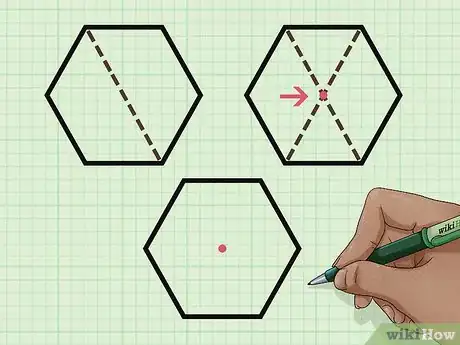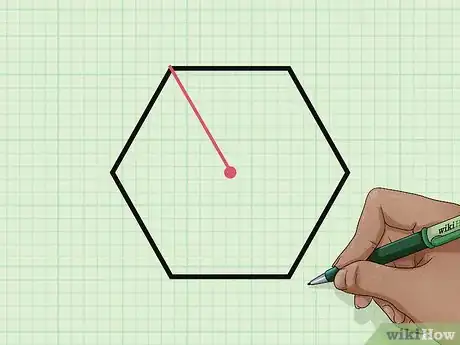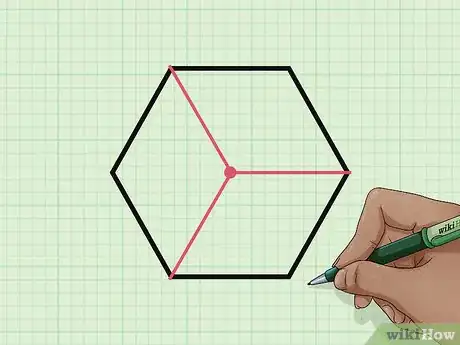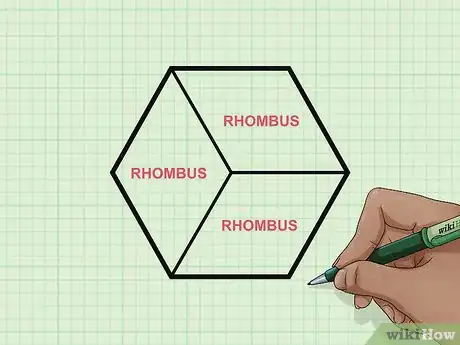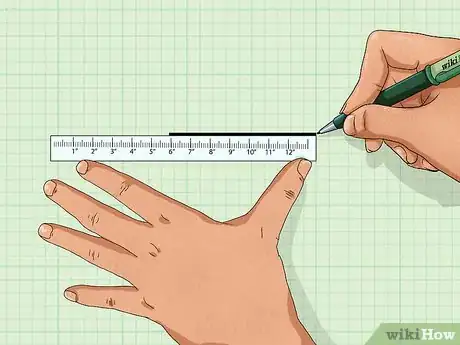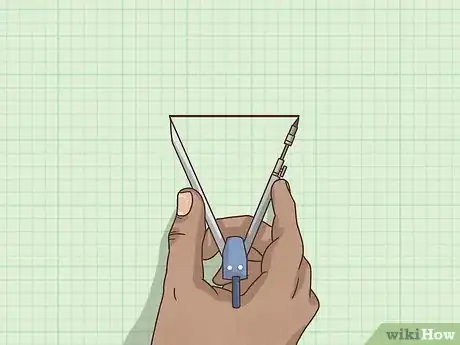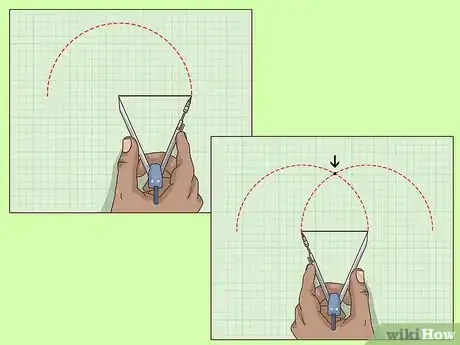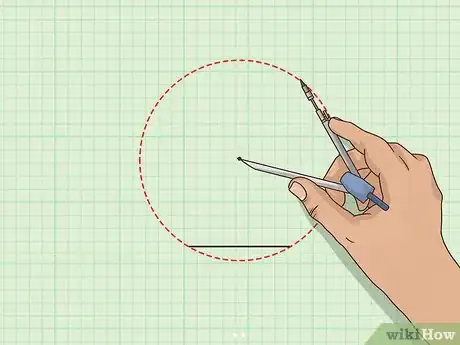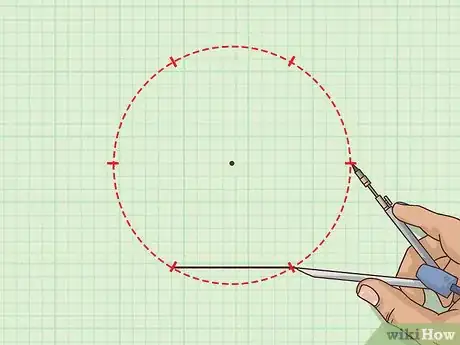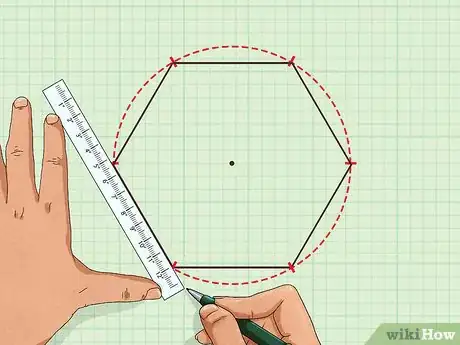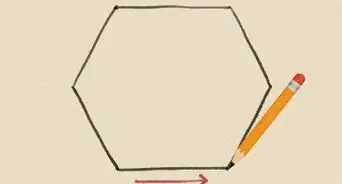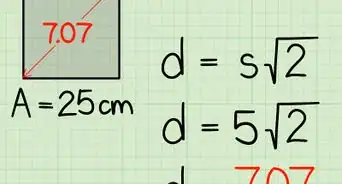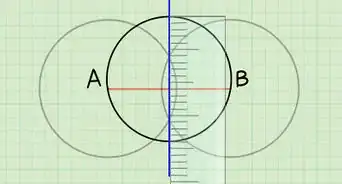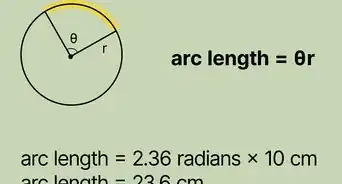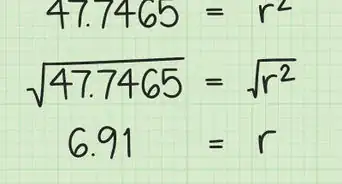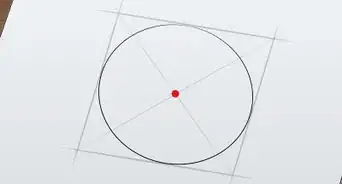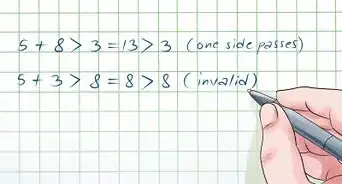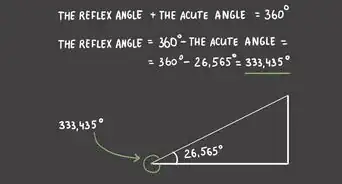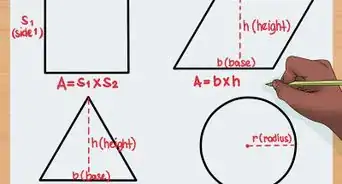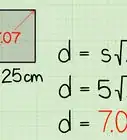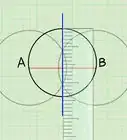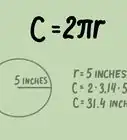This article was co-authored by wikiHow Staff. Our trained team of editors and researchers validate articles for accuracy and comprehensiveness. wikiHow's Content Management Team carefully monitors the work from our editorial staff to ensure that each article is backed by trusted research and meets our high quality standards.
This article has been viewed 69,987 times.
Learn more...
A hexagon is a six-sided polygon. A regular hexagon is one that has six equal side lengths. Because it has six axes of symmetry, it is possible to divide a regular hexagon into a number of smaller equal areas, or parts, using the center point and the vertices as reference points. It might be possible to divide an irregular hexagon, which does not have equal side lengths, into three equal parts; however, because each irregular hexagon has different properties, there are no specific methods for doing so.
Steps
Dividing into Three Equal Parts
-
1Mark the center of the hexagon. If the center is not marked, you can locate it using a straightedge. Draw a line (diagonal), connecting any vertex to the opposite vertex. Draw a second diagonal connecting to different vertices. The intersection of these diagonals is the center point of the hexagon.[1]
- Erase the diagonals after you draw them.
-
2Draw a line from the center point to a vertex. You can begin with any vertex. Use a straightedge to draw the line.Advertisement
-
3Draw lines from the center point to the third and fifth vertices. You should skip every other vertex, so that you have three lines, with one vertex between each.
- Drawing a line to each vertex creates six equilateral triangles, which is six equal areas.[2] By drawing a line to every other vertex, you create half as many equal areas (3 equal areas).
-
4Identify the three equal parts. Each part is a rhombus, which is a four-sided figure with equal side lengths and two sets of parallel sides.[3]
Drawing a Regular Hexagon
-
1Draw one side of the hexagon. A regular hexagon has six equal side lengths.[4] If the side length is specified, use a ruler to draw a line of the correct length. If no side length is specified, you can draw the line to be any length.
- For example, you might draw line AB 5 centimeters long.
-
2Set a compass to the width of the side length. To do this, place the point of the compass on one of the line’s endpoints, and stretch it so that the pencil tip touches the other endpoint.[5]
-
3Draw the center point of the hexagon. To do this, place the point of the compass at the first endpoint, and draw a small arc above the line. Then, place the point of the compass on the other endpoint, and draw another small arc, intersecting the first arc. The point at which these two arcs intersect is the center point of the hexagon.[6]
- Do not change the width of the compass.
-
4Draw a circle around the center point. Keeping the same compass width, move the point of the compass to the center point of the hexagon, and swing the compass around to draw a circle.[7]
-
5Mark the six vertices of the hexagon. The first two vertices are already marked by the endpoints of the original line that you drew. Place the compass on the first endpoint of the line. With the pencil, mark a point on the edge of the circle. This is the third vertex. Move the compass point to this new vertex. Mark another point on the edge of the circle. This is the fourth vertex. Complete this process until you have all six vertices marked.[8]
- Be careful not the change the compass width.
-
6Draw a line connecting each vertex. To tidy up your hexagon, erase the circle and any extra markings. Keep the center point of the hexagon, as you will need it to divide the shape into three equal parts.
Community Q&A
-
QuestionHow do you divide a hexagon that does not have regular sides into three equal parts?
 Community AnswerThere is no easy answer, since each irregular hexagon is different. Often, you won't be able to to divide it into three congruent parts. If you can calculate the area, you can perhaps find three equal areas. These areas may not have the same shape, however.
Community AnswerThere is no easy answer, since each irregular hexagon is different. Often, you won't be able to to divide it into three congruent parts. If you can calculate the area, you can perhaps find three equal areas. These areas may not have the same shape, however. -
QuestionWhat is the shape of a hexagon after 1/3 turn?
 DonaganTop AnswererTurning does not change a shape. It merely moves it. In this case, a regular hexagon that rotates 120° looks exactly as it did before rotating.
DonaganTop AnswererTurning does not change a shape. It merely moves it. In this case, a regular hexagon that rotates 120° looks exactly as it did before rotating. -
QuestionWhat is the name the pattern block used to cover one third of a hexagon?
 DonaganTop AnswererIf you're asking about a regular hexagon, refer to Part 1 Step 4 above.
DonaganTop AnswererIf you're asking about a regular hexagon, refer to Part 1 Step 4 above.
References
- ↑ https://www.illustrativemathematics.org/content-standards/tasks/1200
- ↑ http://www.coolmath.com/reference/polygons-06-hexagons
- ↑ http://www.mathsisfun.com/geometry/rhombus.html
- ↑ http://www.mathsisfun.com/geometry/hexagon.html
- ↑ http://www.mathopenref.com/consthexagon.html
- ↑ http://www.mathopenref.com/consthexagon.html
- ↑ http://www.mathopenref.com/consthexagon.html
- ↑ http://www.mathopenref.com/consthexagon.html
